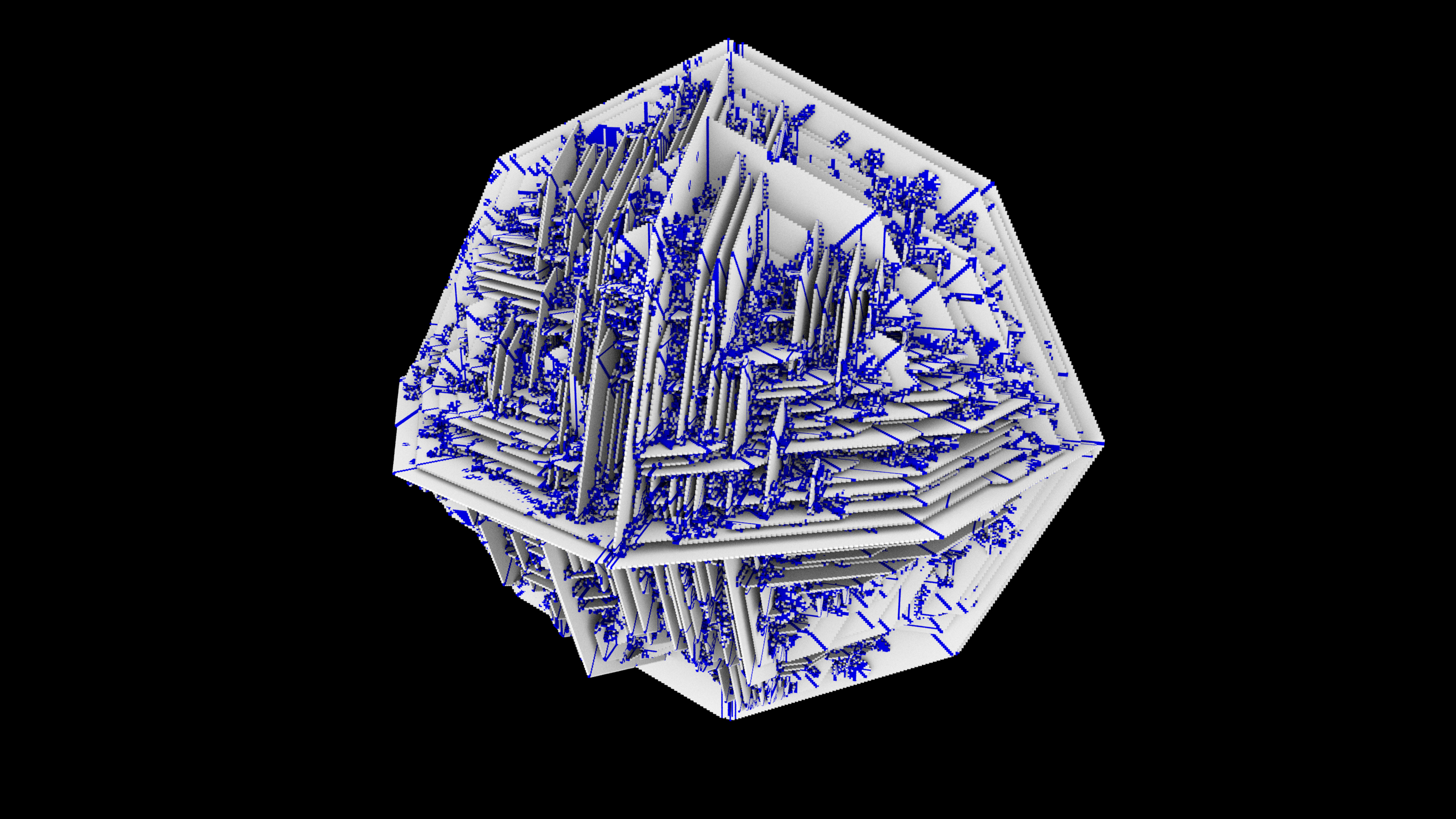

Local changes to the initial pattern tend to spread indefinitely Any stable structures that appear are quickly destroyed by the surrounding noise. Local changes to the initial pattern tend to remain local Evolves to simple separated periodic structures. Wolfram divided CA into four classes, according to their long-term behavior: See the Pen 1D Rules: 2019 by Graham ( on CodePen. Here are some of the well-known 1D rules: A commonly referenced example is his 'rule 30', which is a 1D CA displayed below as a stacked trace (history goes down) - whose pattern is reminiscent of some naturally occurring shell patterns: Stephen Wolfram, author of Mathematica, performed extensive research on CAs and uncovered general classes of behaviour comparable to dynamical systems. (However the computational cellular systems we will visit are far, far simpler than biological cells.) Thus they can be used to model all kinds of information processing and development in biological systems, as well as questions of life's origins. Christopher Adami describes CAs as the first "artificial chemistries", since they operate as a medium to research the continuum between the (such as molecules in crystal and metalline structures) and the living (such as cells of a multi-cellular organism). Decades later Christopher Langton proposed a more concise self-reproducing CA, which has since been further improved upon using artificial evolutionary techniques:ĬAs are not just for exploring this question. The CA model was propsed by Stanislaw Ulam and used by von Neumann - in the 1940's - to demonstrate machines that can reproduce themselves. A periodic boundary 'wraps around' to the opposite edge a static boundary always has the same state, a reflective boundary mirrors the neighbor state.
#3D CELLULAR AUTOMATON UPDATE#
Time axis: The cells are generally updated in a discrete fashion, which may be synchronous (all cells update simultaneously) or asynchronous (cells update sequentially).īoundary conditions: What happens to cells at the edges of the space. It gives the cell state as a function of the states of itself and neighbours. State transition function: The rule that a cell follows to update its state, which depends on the current state and the state of the neighborhood. Neighborhood: The set of adjacent/nearby cells that can directly influence the next state of a cell. Initial conditions: What state the cells are in at the start of the simulation. In binary CAs this is simply either 0 or 1. The space is usually 1D, 2D or 3D, but rarely greater.Ĭell states: The information representing the current condition of a cell. The essential components that define a cellular system are:Ĭellular space: A collection of cells arranged into a discrete lattice, such as a 2D grid.

The mathematical notion of automaton indicates a discrete-time system with finite set of possible states, a finite number of inputs, a finite number of outputs, and a transition rule which gives the state at the next step in terms of the state and inputs at the previous step.Ī Cellular Automaton applies this notion in parallel to a cellular space, in which each cell of the space is a stateful automaton. & Detailing 6- Particles 7- Meshes 8- Art 9- Architecture 10- Kinetic 11- Python 12- Animation 13- Optimization 14- Linkage 15- Particle Simulation 16- Others 5-Example files (Plugin-Based) 1- Lunchbox 2- Parakeet 3- Weaverbird 4- Pufferfish 5- Mesh+ 6- Paneling Tools 7- Ladybug 8- Millipede 9- Dendro 10- Kangaroo 11- Stella3d 12- Anemone 13- Linketix 14- Grasshopper 2.Cellular automata (and related lattice models) & Detailing(5 Hr 15 Min) 3- Advanced(19 Hr ) 1- Optimization(6 Hr 45 Min) 2- Kinetic & Kangaroo (5 Hr 30 Min) 3- Jewelry(2 Hr 30 Min) 4- Architecture(5 Hr 30 Min) 5- Python (50 Min) 4- Example files (Topic-Based) 1- Fractals 2- Mathematical 3- 2D Patterns 4- 3D Patterns 5- Fab. 1- Basics (13 Hr 30 Min) 1- What is Grasshopper3d? (2 Hr) 2- Attractors (6 Hr) 3- Rails & Sections (3 Hr) 4- Data Management (2 Hr 30 Min) 2- Geometry(16 Hr 45 Min) 1- Voronoi & Voxel(1 Hr 50 Min) 2- Meshes(1 Hr 45 Min) 3- 2D Patterns(4 Hr) 4- 3D Patterns(2 Hr) 5- Mathematical(2 Hr 20 Min) 6- Fab.


 0 kommentar(er)
0 kommentar(er)
